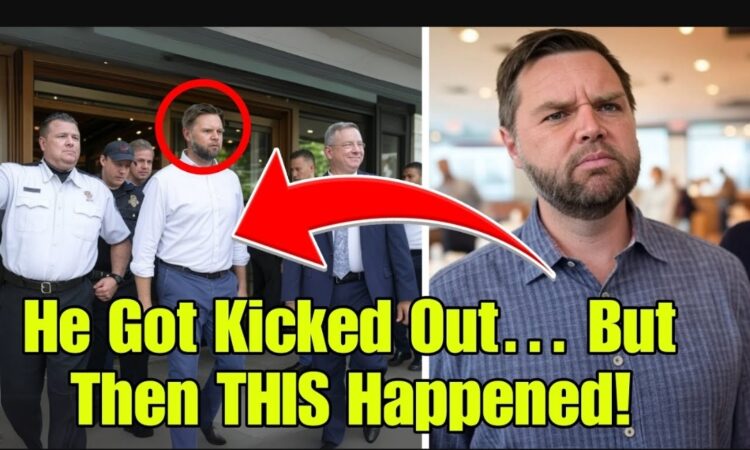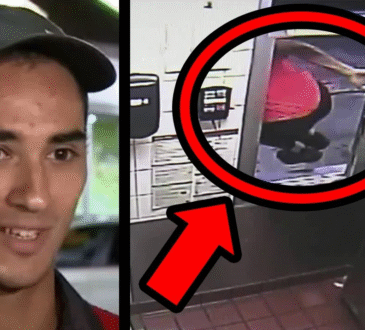JD Vance Denied Service and Kicked Out of a Liberal Restaurant – What He Did Next Shocked Everyone!

The rain drizzled softly over Washington, D.C., as Vice President JD Vance stepped out of an unmarked car wearing a worn-out hoodie and jeans. No security detail, no fanfare – just a man looking for a quiet meal at Liberty Diner, a popular liberal establishment. He took a corner booth, ordered steak and fries, and waited. And waited. Forty minutes passed while waitstaff served other customers, ignoring the scruffy-looking patron.
When Vance politely asked about his order, the head waitress brushed him off. The manager took one look at his casual attire and called security. Within minutes, the Vice President of the United States found himself standing on the sidewalk outside, having been physically removed from the restaurant. But instead of anger, Vance felt something deeper – a profound understanding of what millions of Americans experience daily.
What happened next would spark a national conversation about dignity and respect. Vance didn’t immediately reveal his identity. He first made a phone call that brought black SUVs screeching to the curb, Secret Service agents flooding the diner. The look on the manager’s face when he realized who he’d ejected became an iconic image of instant regret.
But the real story wasn’t about revenge. Vance turned the moment into a powerful lesson. He had the entire staff – from manager to waitresses – experience what he’d endured. They became the customers, subjected to the same poor treatment. The manager himself sat ignored for twenty minutes before being told to leave his own establishment. The humbling experiment brought many to tears.
The viral video of the incident didn’t just shame one restaurant – it held up a mirror to America. Stories poured in from people who’d faced similar treatment: the construction worker denied service at a cafe, the single mother sneered at in a boutique, the veteran ignored at a dealership. Within days, “Liberty Diner” closed its doors for rebranding, reopening as “The American Table” with a new commitment to equal treatment.
President Trump invited Vance to address the nation from the White House. “This isn’t about politics,” the Vice President said, his voice thick with emotion. “It’s about whether we still recognize the basic dignity of every human being.” His challenge resonated across party lines – a rare moment of unity in divided times.
The diner’s transformation became symbolic. The same waitress who’d ignored Vance now greeted every guest warmly. The manager who’d ordered him removed personally apologized to customers they’d previously mistreated. And when Vance returned, he wasn’t just served promptly – he was welcomed as someone who’d helped them rediscover their humanity.
This story spread far beyond one restaurant’s walls. Other businesses implemented “dignity training.” Corporations reviewed customer service policies. Schools used the incident to teach empathy. The movement even reached Congress, where bipartisan legislation was introduced to address service discrimination.
But the most profound change happened in ordinary interactions nationwide. People began noticing how they treated – and were treated by – strangers. That scruffy guy at the counter might be the Vice President. Or he might just be a human being deserving basic respect. Either way, as Vance proved, everyone deserves to be seen. The quiet revolution started with one man’s willingness to experience what others endure – and his courage to turn humiliation into healing.




